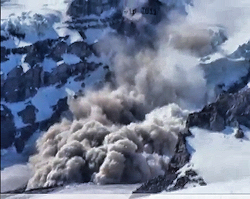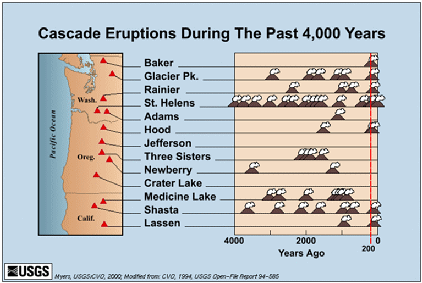Posts Tagged ‘mt rainier’
A lifetime of Pacific Northwest Photography
Lahar
Lahar Definition
A Lahar is a thick slurry flow formed when volcanic ash and debris mix with water, either in rivers or from rain or melting snow and ice on the flank of a volcano. More than 60 post-glacial period mudflows have been discerned to have occured around Mount Rainier. See: Lahar on Wise Geek
Osceola Mudflow
The Osceola Mudflow is the largest known Lahar event. It occurred about 5,600 years ago when up to one cubic mile of rock, ice, and debris slid down off Mount Rainier. Mount Rainier’s summit and northeast slope slipped away creating a mile-wide horseshoe-shaped crater open to the northeast. This crater has since been filled in by subsequent magma flows. The Osceola Mudflow traveled through the site of present-day Enumclaw, broadening and extending at least as far as the Seattle suburb of Kent, and extened into Commencement Bay, now the site of the Port of Tacoma. The communities of Orting, Buckley, Sumner, Puyallup, Enumclaw, and Auburn are also wholly or partly located on top of deposits of the Osceola Mudflow. Resulting sedimentation from the Osceola Mudflow pushed the shoreline into Puget Sound adding more than 200 square miles of new land surface.
National Lahar
Somewhere between 2,200 and 500 years ago, a large chunk of the south flank of Mount Rainier calved off and a resulting lahar flowed down the Nisqually River. Other smaller flows evident during this time, one which temporarily filled the upper South Puyallup and Tahoma Creek valleys to a depth of at least 1,000 feet.
Electron Mudflow
The Electron Mudflow buried Orting about 500 years ago and it continued to flow a total distance of about 60 miles. This lahar occured without an apparent eruption from Mount Rainier. A trigger may have been an earthquake or simply that some of the rock near the surface of the mountain had become weak and fractured, calving off.
Summary
Mount Rainier has built up so high that it currently supports the largest system of glaciers in the lower contiguous United States. Scientists understand that Mount Rainier is still an active volcano. The reasons for this are; Mount Rainier stands atop the Cascadia Subduction zone, it has current geo-thermal activity, it has seismicity, and it has erupted in as late as the 19th century. Because Mount Rainier is an active volcano, it must be respected for its potential to cause destruction in what is now a highly populous area known as the Puget Sound region (including the major cities of Tacoma, Seattle, and Olympia).
Sources cited:
Cascades Volcano Observatory, USGS | GeoTimes | HistoryLink.org, A Short History of Mount Rainier, USGS


